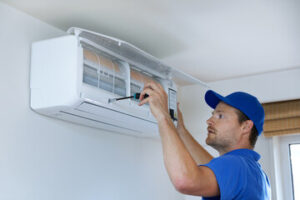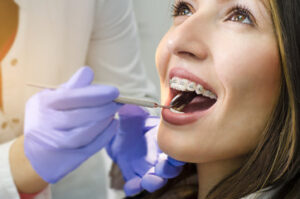Many pets adapt quickly and enjoy boarding. Others pine away, refuse to eat and generally feel miserable for the entire duration of their stay.

A quality boarding facility should employ well-trained staff that is used to handling a variety of animals and temperaments. They should also be able to administer medicine and have an established relationship with a nearby emergency veterinarian. Read on Sierra Canine for more information.
Pet boarding provides an environment that is safe and controlled for your pet. It allows them to interact with other pets and staff in a comfortable setting that is supervised at all times. This may help to reduce stress and anxiety that can be caused by leaving them home alone for long periods of time, and it also helps them to feel like they are in a familiar place when they are away from you.
Many reputable pet facilities will work closely with owners to ensure that their pets stay on a routine that is as close as possible to the pet’s normal lifestyle. This will include feeding times, exercise, and sleep schedules, as well as any medication instructions or other special care your pet needs. You may even be able to bring some of your pet’s personal belongings, such as favorite toys or blankets, for comfort and familiarity.
You can rest assured that your pet is being supervised by trained staff members who are experienced in dealing with all types of pets and are committed to animal welfare. In addition, a good boarding facility will have veterinarians on call or on-site in case of medical emergencies and can quickly respond to your pet’s needs.
Another advantage of boarding your pet is that they will receive the regular care they need, including grooming services if desired. This will keep your pet looking and feeling their best when they return to you.
Boarding can be beneficial for a variety of situations, including travel for work or vacation, major home renovations, and illness or hospitalization. It is important to research several facilities in your area and visit them before making a decision. Check to see that they are clean, well-lit and staffed, and that they put the safety and comfort of their guests first. It is also a good idea to book a short overnight stay prior to any extended boarding so that your pet can get used to the facility and the staff and feel more confident during their longer stays.
Most boarding facilities offer opportunities for your pet to socialize with other animals and with staff members, which can help reduce boredom and anxiety. They may also provide opportunities for physical activity, which can be an excellent way for sociable pets to burn off energy.
Safety
There are many safety considerations when it comes to boarding your pet. For example, make sure your dog is up-to-date on all vaccinations before boarding him. This not only protects your pet but helps prevent the spread of disease to other pets at the facility. Most facilities require rabies, distemper, and bordetella (kennel cough) for dogs, and rabies and FVRCP for cats. A health check with your veterinarian is also a good idea, as it will help determine whether or not your pet has any underlying conditions that could flare up while away from home.
In terms of physical safety, a good facility will have safe play areas with fences and gates that are well-maintained and secured. It’s also important to look for cleanliness and sanitation protocols, and ask about the facility’s emergency plan in case of natural disaster or individual pet emergencies.
Another factor to consider is your dog’s emotional comfort. Some dogs are apprehensive about boarding, and they may show signs of stress during their stay. For this reason, it’s a good idea to discuss your pet’s temperament and aversions with the boarding staff, and to provide them with detailed information about your dog’s daily routine and any special quirks or needs.
Finally, consider whether or not the boarding facility allows for personal belongings like favorite toys and beds. Unless the facility separates dogs based on social preference or temperament, your pet’s items will likely be shared with other pets. In this case, it’s best to pack a few of your pet’s favorite items to keep him feeling at home during his stay.
Boarding offers many benefits to pet owners, and it can be a great option for those times when you are unable to care for your pets. However, it’s important to understand that traditional boarding is not appropriate for every pet, and there are alternatives that can be safer and more comfortable for your furry family member. If your dog is extremely apprehensive or aggressive, and has serious medical issues that require close monitoring, pet sitters and in-home boarding may be better options.
Convenience
Many pet parents need to leave their pets for work, family obligations, travel, and other reasons. Pet boarding provides a professional, safe, and often enriching environment for your pet while you are away. While it can be a bit sad for your pet to be separated from you, most pets adjust well to a new routine when they are boarded.
A quality boarding facility will have staff on hand to watch over your dog or cat at all times. These people are trained to understand pet behaviors, read body language, and make sure your furry friend has a great time while you’re gone. This can reduce your stress and anxiety about leaving them for the day or the week, and can also give you peace of mind knowing that they are supervised at all times.
Most reputable kennels will have structured schedules for activities, playtime, and rest periods to help your pet feel comfortable in their new environment. This can be especially important for dogs that are prone to separation anxiety. Ask your kennel for details, and see what the ratio of staff to pets is. A low ratio usually means more personalized care, and you can be confident that your pet is getting the attention they deserve.
Some boarding facilities offer additional services, like doggie daycare, which can provide an opportunity for your pet to have more interaction with humans and other animals while they’re staying at the facility. They can also play with other boarding pets, which can provide them with more exercise and mental stimulation while they’re away from home.
You can also ask the kennel if they will send you updates and pictures during your pet’s stay, which can help ease your worries and give you peace of mind. Ask about any specific requirements your pet may have, such as whether they require medication or special food. You should also ask about any items you should bring, such as a favorite toy, toy box, or bed.
Keep in mind that sometimes it’s worth the extra drive to find a facility that excels in boarding and care. The peace of mind and quality of care you can get for your pet are worth it.
Medical Care
Pet boarding and day care facilities are designed with safety in mind, with unique safety controls, processes and procedures to prevent pets from getting injured or sick. These facilities also have veterinary and emergency medical services available in case your pet needs to be seen during their stay. In addition, many boarding and daycare centers donate a portion of their profits to local animal shelters. This helps animals that are waiting for adoption, including cruelty survivors and newborns.
Quality boarding services will follow your pet’s typical routine, which can reduce their stress levels while they are away from home. For example, they will feed them on a regular schedule and provide exercise sessions and quiet periods. They will also ensure that your pet receives any medications they need. Some boarding and daycare services will even text or email updates to keep you updated about your pet’s activities while you are away.
It’s important that you talk to a boarding facility ahead of time so they can get a feel for your pet and your expectations. If your pet is prone to anxiety, you may want to ask the boarding service about strategies they use to help pets relax, such as pheromone diffusers or other calming techniques.
Most reputable boarding facilities will ask you to bring your pet in for a wellness examination before they’ll accept them for a boarding visit. This is a great way to make sure your pet is healthy and up-to-date on their vaccinations, which are required for most boarding visits. Dogs should be up-to-date on their distemper, rabies, and bordetella vaccines; cats should be up-to-date on their FVRCP (feline viral rhinotracheitis calicivirus panleukopenia) and rabies vaccinations.




